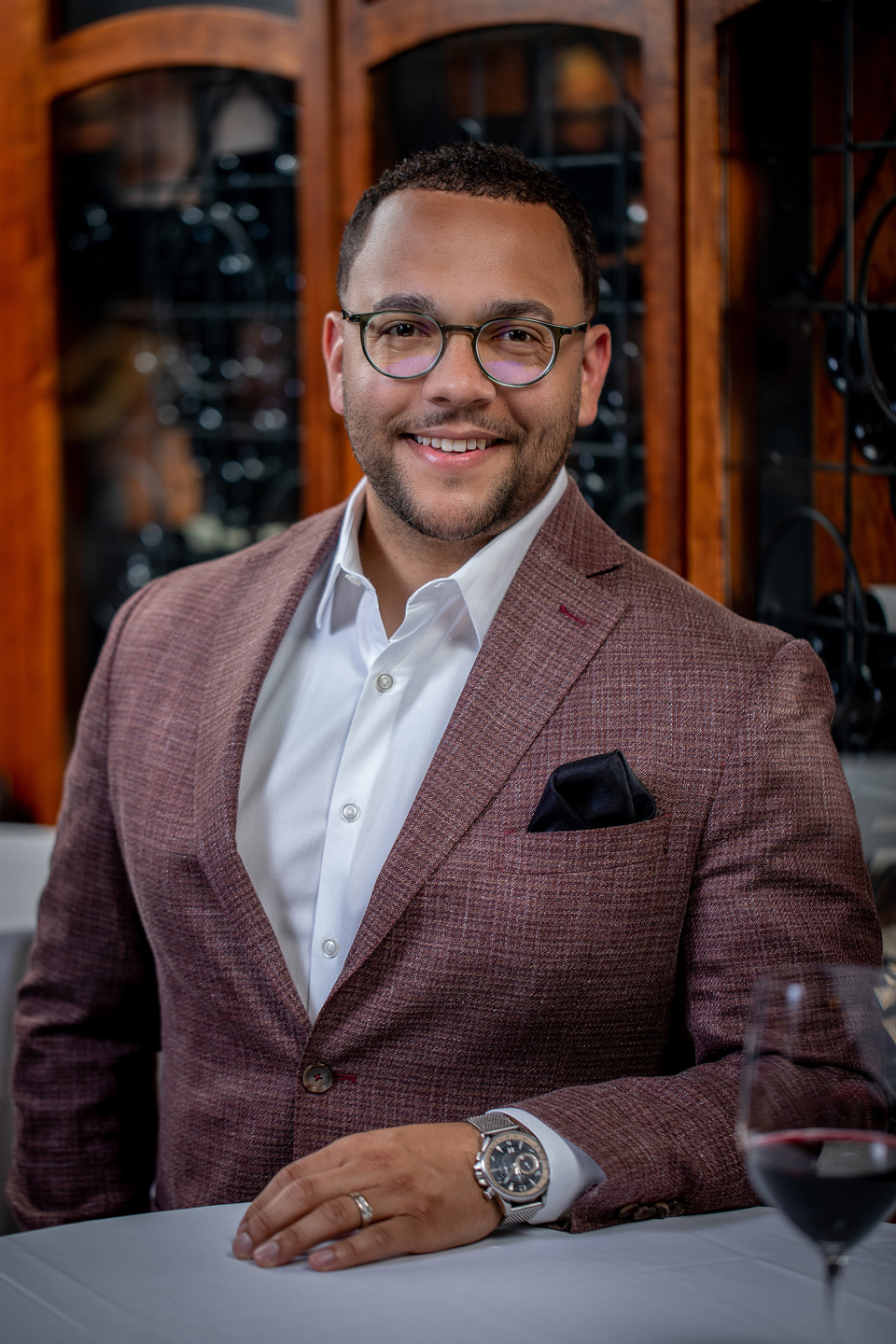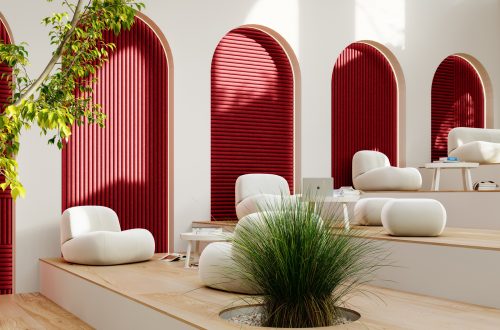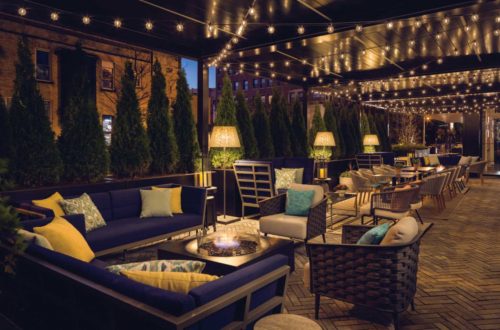Founder, CEO
Pure Architects | Grand Rapids and Detroit, Michigan
When Zachary Verhulst, AIA, NCARB, NOMA, founded Pure Architects in 2020, it was with a powerful purpose to create spaces and places that uplift communities, positively impact the environment, and inspire people through inclusive and healthy design. To Verhulst, architecture is a vehicle and a platform in which to do good in the world, and a formal route of advocacy that can have a tangible effect across the socio-cultural, built, and natural landscape. Sustainability is not an afterthought, but rather a foundational principle, and relationships are deeply rooted and purposefully driven. And each project is an opportunity for change and a chance to contribute to a just and equitable world for the future, where people and culture are at the heart of every design.

“Pure Architects’ purpose is to use architecture to do good in the world and we do that through applying a few different lenses to our work and our relationships. We take this humble position that the buildings aren’t for us, it is usually not our resources creating them, it is often not our neighborhood, and so it takes this ability to leverage humility and empathy to understand who you are actually designing for. Business is rooted in time and effort, so hard work is the delta between good and great architecture. We aspire to do great architecture, but it takes time and energy to get there, so hard work is a really important tenant for us,” Verhulst said.
“We work for a lot of clients who don’t even know what architects are or what they do. It is an intimidating position to be in as a client, while also a really vulnerable place to try to ask questions if you feel ill-equipped to do so. We try to get to this place of democratizing decision-making so the tools that we use, the words that we choose to say—everybody speaks a similar language around design and decision-making. It really helps the architecture have specific context, but also its success level goes way up when everybody believes in what they are contributing to,” Verhulst added.
Pure Architects is a Black-owned architecture and design firm based in Grand Rapids and Detroit, Michigan. Backed by a team of dedicated professionals from diverse backgrounds, the firm believes responsible architecture should be rooted in its particular place and meaningfully respond to its context. The firm is dedicated to equity and design excellence, an empathetic and economically responsible approach, and embracing beautiful and high-performance design outcomes that ultimately inspire and elevate their clients’ lives. It is a philosophy carefully envisioned by Verhulst, as founder and chief executive officer, and a firm culture that embraces a belief in working together and pushing the boundaries of what architecture should do for all communities.
“We run a people business, a talent business, and the team that is forming here is all coming together with one really clear mission, which is to use architecture to do good. We are getting a pretty diverse team from all over the country, bringing big firm and small firm lenses to our work,” Verhulst said.
“I love this team. I get up and I get to support 24 people and the fulfillment that they find in doing the work. It is the joy of seeing this connection between what could be and our ability to influence what is—it is a powerful thing, there is a lot of responsibility in it. We take it really seriously, but I think that is what people love about the work is this space and freedom to push, to plant some flags and push the boundary on what architecture should do and who has access to it,” Verhulst added.
Verhulst also noted as a process over product firm, Pure Architects’ portfolio of work reflects a dedication to problem solving, listening, and innovating over specific scales and typologies. If anything, it is identifying where their expertise can have the most impact that drives their work, currently focusing on projects where people spend a lot of time inside, such as education, housing, healthcare, and workplace—and nonprofit clients across sectors.
“We have nonprofit clients who fill out each of those vertically, but we focus on them separately—we have a different process, different rates that we charge, and so it is its own bucket of energy, but community-rooted work is the passion point for everybody here,” Verhulst said.
It is a passion that goes beyond studio walls for Verhulst, who throughout his professional career spent time as an adjunct professor at Kendall College of Art and Design, and currently is involved with NOMA Detroit’s Project Pipeline as Design Instructor + Curriculum Development. The latter of which is both a mentorship program and architectural design camp developed by NOMA with a mission to empower a diverse population of young people through design and connect them to architects and planners, fostering the next generation of creative professionals and changemakers.
Verhulst also serves on the board for the Grand Rapids Chamber, the West Side Corridor Improvement Authority, GRPS Advisory Council for the Academy of Design and Construction, and the City of Grand Rapids Commercial Building Climate Advisory Team. Verhulst’s passion for people, how they engage with space, and for mentoring the next generation is arguably an intuitive evolution of his pathway into architecture, where an early love of art and math dovetailed with his exposure to landscape and construction sites to transform into a personal mission to uplift people and communities through design.
“I was born and raised in Grand Rapids and my dad owned a landscaping business, so I grew up on job sites as a kid and I learned how to read site plans and planting plans. I met landscape architects when I was really young, but I just never connected the dots to building. In high school, I really loved math and art, and I initially wanted to go into medicine, but I had a guidance counselor who was like, ‘that’s great, but I think you could also investigate this passion for art,’” Verhulst said.
“I went into graphic design at Grand Valley State University initially and then through relationships, I ended up being introduced to an architect here in town, Isaac Norris [of Isaac V. Norris & Associates P.C.]. He’s a sole proprietor, but he was willing to put me on his hip for a summer and took me to client meetings all over and I fell in love with the profession right away. It was this connection between art and math and construction and contracting, stuff I already felt very comfortable doing,” Verhulst added.
Initially pursuing graphic design at the Allendale, Michigan-based Grand Valley State University, Verhulst transferred to Lawrence Technological University in Southfield, Michigan to study architecture. While enrolled at Lawrence Tech, Verhulst earned a Bachelor of Science in Architecture and Master of Architecture and would build upon that educational background several years later when he attended Harvard Business School Online to study business finance and accounting. Verhulst noted he lived in Detroit for nearly six years before moving back to Grand Rapids in 2012 when he spent time as an architectural designer for C2AE, an engineering and architecture design firm, and project architect and project manager at TowerPinkster, a Kalamazoo-headquartered and Grand Rapids-based firm of architects and engineers.
“I learned how to operate in a large organization. I was an owner at TowerPinkster and on a leadership path. Business and finance were a big part of that growth, so I went to Harvard Business School Online for finance and I taught at Kendall, because I like to teach and be around students, so some of those things were just self-directed out of a need for personal growth,” Verhulst said. “But, ultimately, I think the path from that place to Pure Architects was through this desire to control culture. I think in a large organization, it is really hard to influence a place without the power to effect change, so I just got to this place where it was time to move on.”
Today, Pure Architects is in its third year and is considered a Just® labeled organization by the International Living Future Institute, a non-governmental organization with a socially just, culturally rich, and ecologically restorative mission for society. The Just® program is a voluntary, transparency platform, or in essence, a “nutrition label for socially just and equitable organizations,” measuring indicators like diversity and inclusion, equity, stewardship, employee benefits and health, and purchasing and supply chain. While the program is just one of many ways to express a company’s commitment to similar values, Verhulst noted it does reflect a recent shift in owner or client mindset. It has been an opportunity in the industry for young studios like Pure Architects that might not have established resumes or engineering and construction divisions.
“We continue to be hired by clients, because they want this experience that we are providing, which is rooted in this common language around equity, diversity, and sustainability, and this passion to deliver something exceptional in a new way that doesn’t cost a ton of money. I think it is really interesting to see this cross-section of information come together. I think there is a change in owner mindset around what architecture has the ability to do for them or what architects can do,” Verhulst said.
He views labor shortages in a certain age and skill band related to architecture as a challenge in the near future, as the ripple effect from the 2008-2012 Great Recession is starting to finally hit the industry and a generational gap is starting to emerge as older architects look to retire in the coming years. Verhulst also considers artificial intelligence as both a challenge, as some view it as a means to replace architects, and an opportunity, if it actually becomes useful to practitioners as generative and iterative design software; and current zoning ordinances and building codes as a challenge for truly addressing environmental concerns.
“We are never going to be able to catch up to these climate challenges, because we are trying to solve current global issues with archaic building codes and zoning ordinances. We are never going to get to actually innovate in the built environment based on the constraints that are placed on us through municipalities. We need a call to action to advance the rules and guidelines in which we have to design buildings,” Verhulst said.
“I think there are a lot of firms in the world doing great work and there are a lot of firms in the world that are just leveraging a process to get paid, so I wish we could just elevate everybody’s desire to do great work over just getting paid and if I could wave a wand, I would do that for sure. For me, it is not always about Pure Architects winning or Pure Architects being the best, I think my desire is to do great work and hopefully we elevate the practice around us to do great work,” Verhulst added.
Verhulst also sees an opportunity to innovate when it comes to construction, as the studio may look to explore the possibility of delivering some of their own contracting work to ensure the buildings they design are built as healthy, beautiful, and high-performance structures. And as the award-winning architect, recognized as 2019 AIA GR Young Architect of the Year, considers the disruptive, inspiring potential of design and architecture for himself, for his team, and for communities, Verhulst noted it is a means, a method, and a vocational pathway that inspires him each day.
“Architects have this unique ability to capture cultural significance. There is so much opportunity to further this cross-section of architecture and culture and these societal shifts in thinking, to normalize sustainability, for instance. I think that is the beauty of architecture, things that seem extreme all of a sudden become normal and you have to think about the next disruptive thing. COVID, for instance, shook up everything, so now we have to innovate building enclosures, indoor air quality, and these new things that should have mattered the whole time. I think that will continue to happen as we respond to culturally significant things,” Verhulst said.
“Design is the way that we can solve. Design is a mode in thinking, doing, and making to improve a desired outcome through a methodical way of thinking or testing that we find in architecture, and in many places. It has provided me a life that I don’t think I could have imagined otherwise. Architecture is a means to create a common language in problem solving, and there is something beautiful about it being able to be taught to other people. I love doing architecture. It’s like this built, formal route of advocacy for us, we can see our hard work and sweat and advocacy actually constructed at the end and it has ripples and results in our communities,” Verhulst added.
Text: R.J. Weick
Photography: (gallery) Courtesy of Pure Architects; (profile) M-Buck Studio LLC
First published in Great Lakes By Design: Architectonics, Volume 7, Issue 6






